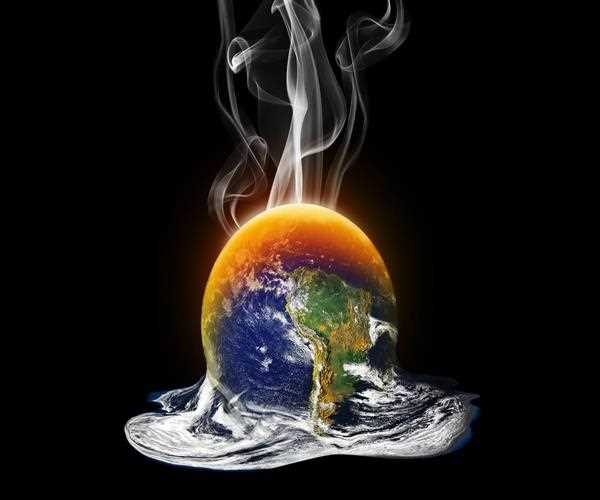Search here

08-May-2024 , Updated on 5/8/2024 10:15:09 PM
Impact of rising heat on the future world
With global warming, the planet and humans face effects that become more severe and huge, with the consequences expanding and becoming obvious. The impact of the heat increase becoming more and more noticeable through the intensifying heatwaves and the growing number of wildfires may eventually affect our living environment, health and local as well as international economy.
This article is going to give you a deep understanding of how rising temperatures can change the way the life will be in the future.
Health risks arising from excess heat
Heatwaves are among the most powerful and deadly threats during the global warming age. It does not only result in small diseases but also frequently leads to heat-related diseases including heat strokes and dehydration. It may be fatal especially in some demographics. High air temperatures are the thing, which can accelerate normal course of chronic diseases, among them cardiovascular diseases, respiratory problems, and diabetes. The older generation and the children are the most vulnerable groups, along with those who already have medical conditions.
In the time of heatwaves, the urban areas can be also on more heat comparing to the rural ones because of the urban heat island effect. Heat island effect is observed because building component like roads, and buildings absorb and re-re-radiate the sun’s heat more than natural vegetation and bodies of water. As a result, the city becomes a hot spot for raised temperature which puts the millions of people in risk of heat stroke.
Economic effect and output of energy
High temperatures have overwhelming effects in the economy. In the agricultural setting heat stress to crops and livestock can result in reduced yield and higher mortality which have a negative effect on food supply and farmers income. As an example, hot periods that stay for a long time can significantly affect pollination as well as hinder plant growth, which leads to food with diminished nutritional value.
However, the energy capacity is also overstrained as air conditioner and refrigeration demand increase dramatically during summer hot days. Yet, these additional energy needs can at times be more than the power grid can bear, resulting in power failures and power production network losses. Additionally, as water bodies and natural reservoirs continue to warm, their capacity to cope with thermal waste heat from the power plants in the process will deteriorate, which may in turn worsen energy production and circulation.
Escalation of Environmental Disaster
The heating of the atmosphere by the rise in the global temperature is a factor that leads even to greater environmental disasters. Wildfires go into the mode of being more frequent and exertive as there is no break in the hot and dry weather which prevails, particularly, in places like the American West and Australia. Instead of ruining huge hectares of land and property, these fires also contribute to the pollution of air, thus decreasing the level of biodiversity.
In addition, heat can be put to drought risk, which in turn, results in water shortages that affect millions of people across the world. These droughts can cause immense damage to agriculture, along with the radical rise of food prices, worsening food security and even triggering conflicts over water resources. The connected phenomenon of heatwaves, droughts, and wildfires produces a process of an ecological defect that is challenging to stop.
Impacts on the Infrastructure and Development Planning
The question of infrastructure and urban planning should review due to the change of temperatures. The bearing capacity of the roads, bridges and rails becomes compromised under extreme temperature which results in a faster deterioration of the engineering assets and a need for frequent maintenance. In addition, the cities need to develop mechanisms to cope with heat through promotion of greener roofs, more vegetation, and the introduction of buildings that can withstand higher temperatures without having to meddle too much with the energy use.
Strategies for Building Resilience
To mitigate the impacts of rising temperatures, communities and governments need to implement robust strategies for resilience and adaptation:
- Developing Heat Action Plans: Local governments could develop heat action plans such as cooling centers’ opening and bringing to the public’s attention classifying such heat-related health dangers.
- Enhancing Green Infrastructure: Strategic plantings of trees on sidewalks and in parks can enhance the local landscape and therefore reduce the urban heat island effect, among other heatwave mitigation strategies.
- Improving Building Standards: For the new construction, it is necessary to adopt strict building codes with buildings that are able to be energy efficient as well as heat resilient (maybe these structures could be made of materials that reflect heat, not absorb it).
- Promoting Energy Efficiency: Encouraging the running of renewable energy sources and improving the energy efficiency of houses will ameliorate the burden on wires and decelerate greenhouse gas emissions.
Conclusion
The very temperatures that are favorable for life are on warming trend and a part of the current reality that is experienced whether region. Its effects are interconnected and can be either mild or catastrophic, starting from the individual and society, through to the environment and the overall operational system.
Learning from the results of climate change and taking preventive measures helps us protect the ecosystem for the upcoming generations, despite the new difficulties arising from a warmer climate. Achieving the decrease in global temperatures to secure a future for all people in a sustainable way is the main goal to be accomplished.

Student
An MBA in finance imparts and improves management aptitude, inventive ability, critical thinking ability, and so forth. It offers a real-time experience that fabricates a staunch career foundation for students and working professionals. It helps them to thoroughly understand the financial sector.
Join Our Newsletter
Subscribe to our newsletter to receive emails about new views posts, releases and updates.
Copyright 2010 - 2025 MindStick Software Pvt. Ltd. All Rights Reserved Privacy Policy | Terms & Conditions | Cookie Policy